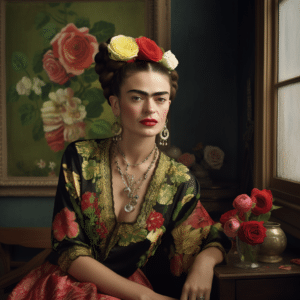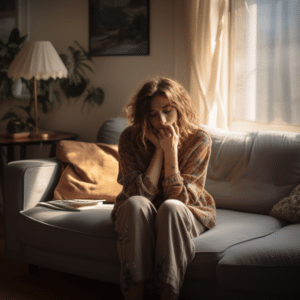Unveiling the Impact of the Frida Kahlo Bus Accident
Last updated Monday, December 4th, 2023

Frida Kahlo, a renowned Mexican artist, transformed personal tragedy into a source of inspiration and artistic expression. Her life’s journey from a debilitating accident, specifically the Frida Kahlo bus accident, to becoming a symbol of strength and resilience is a testament to the power of creativity and perseverance. Explore the transformative trauma that shaped her life and art, and discover the indelible impact she continues to have on the world.
Get Your FREE Case Review Today
Contact us today and we will help you get the compensation that you deserve.
or Send Us Your Case DetailsGet Your FREE Case Review Today
Contact us today and we will help you get the compensation that you deserve.
or Send Us Your Case DetailsThe Catastrophic Event that Redefined Frida Kahlo’s Life
On a fateful day in September 1925, a tragic bus accident forever altered the course of Frida Kahlo’s life. The collision not only left her with debilitating injuries but also set her on a new path, discovering her passion for painting and ultimately becoming a renowned artist whose work captivates the world to this day.
The Collision that Shook Mexico City
The devastating Frida Kahlo’s bus accident transpired when the bus driver unsuccessfully tried to cross an intersection ahead of an oncoming electric streetcar. The collision left several dead and many injured, including Frida, who was only 18 at the time. The accident drastically influenced her life, leading to severe injuries that caused persistent pain and sparked creativity for her artwork. Frida was taken to the Red Cross Hospital for treatment following the tragic event, before being transferred to Henry Ford Hospital.
Injuries that Changed a Career Path

The bus accident left Frida with multiple fractures, a punctured uterus, and a broken spinal column. She endured a lengthy recovery period, during which painting became a means of self-expression and coping with her physical and emotional pain. It was through this adversity that Frida found her true calling as an artist, channeling her experiences into powerful and evocative pieces that continue to captivate and inspire audiences worldwide.
The Birth of an Artist in Adversity
During her recovery, Frida suffered and produced self-portraits that reflected her mental state and suffering, similar to her reflection in the mirror above her bed. It is said that during the bus accident, Frida screamed in pain, which later influenced her artistic expression of pain and suffering.
Frida’s father, Guillermo Kahlo, a photographer, encouraged her artistic pursuits and provided her with materials and support during her convalescence. It was with his help, as well as the support of her then-boyfriend Alejandro Gómez Arias, that Frida was able to overcome the challenges of her injuries and develop her artistic talents, ultimately leaving a lasting impact on the world of art.
The Ripple Effect: From Personal Trauma to Artistic Expression
Frida Kahlo converted her personal trauma into a significant influence on her artwork, which changed Frida Kahlo’s life. Her capability to translate her pain and experiences into her art resulted in compelling and evocative pieces that still appeal to audiences worldwide.
Her art served as a form of therapy, helping her cope with the physical and emotional aftermath of the accident. Frida’s paintings, often featuring vivid and striking imagery, expressed her personal experiences and themes such as pain, passion, and defiance.
Visualizing Pain through Art

One example of her ability to visualize pain through art is her painting “The Wounded Deer,” which alludes to Kahlo’s feeling of being free like an animal yet hindered by her physical and emotional suffering caused by the bus accident. Among famous paintings, this piece stands out for its powerful depiction of personal struggle. The inclusion of the word ‘Carma’ – fate – implies that Kahlo believed her health issues to be unavoidable and potentially perpetual.
Symbolism and the Unfinished Painting
Frida Kahlo’s unfinished paintings often contained symbolism related to her inability to have children. For instance, “Frida and the Cesarean” conveys her sorrow at not being able to have children of her own, with her body’s incapability of bearing children represented through the symbolism in the artwork.
Kahlo incorporated symbolism into her artwork by utilizing vivid imagery to express her personal experiences, emotions, and themes such as pain, passion, and defiance. She also employed religious symbolism, portraying herself as the Madonna and incorporating symbols from Aztec mythology. Her capacity to channel her pain into art is seen as a sign of her strength and the potency of artistic expression.
Love and Turmoil: Diego Rivera’s Role Post-Accident
Diego Rivera, a distinguished Mexican muralist, had a considerable impact on Frida Kahlo’s life after the accident. Even with their stormy relationship marked by love, chaos, and unfaithfulness, they established a creative alliance that boosted both their artistic careers and consolidated their legacies.
Their complex yet ardent relationship had a profound effect on both of their lives and professions. Diego’s support and encouragement, as well as his renown as an artist, had a notable impact on Frida’s artistic style and subject matter. Alejandro Gomez Arias, a close friend of Frida, also played a role in her life.
Rekindling Old Flames
After her accident, Frida Kahlo and Diego Rivera rekindled their relationship, resulting in a stormy yet fervent bond that deeply influenced their lives and careers. Diego’s unfaithfulness went too far when he had an affair with Frida’s sister Cristina, causing her great distress.
Despite their tumultuous relationship, they divorced once in 1940 but soon remarried. After Frida’s death in 1954, Diego grieved for a year before moving on.
Their relationship, full of heated arguments and both engaging in multiple extra-marital affairs, remains an important part of their shared history and story.
A Creative Partnership
Frida Kahlo and Diego Rivera formed a creative partnership that was deeply intertwined with their personal relationship. They painted each other for 25 years, providing an in-depth look into their intricate marriage. Frida’s art often depicted the oppressive and passionate nature of their relationship, while Diego was profoundly impacted by their bond as well.
Their mutual influence on each other’s artistic style, drawing from their shared passion for their indigenous roots, Mexican popular art, and communist political ideals, led them to create powerful works of art that expressed their experiences. Through their collaboration and shared artistic vision, they established and promoted the Mexican avant-garde.
The Legacy of Resilience and Inspiration
Frida Kahlo’s resilience and inspiration in the face of adversity have left a lasting impact on the art world and beyond. Her personal experiences, resilience, and unique artistic style have had a profound influence on contemporary artists. Many artists are inspired by Frida’s themes and incorporate them into their own work.
Frida’s brave and persistent spirit continues to touch people from diverse backgrounds. She has become a symbol of strength and inspiration for countless individuals, including feminists and the LGBTQ community, who admire her unwavering determination to overcome life’s challenges and express her authentic self through art.
Casa Azul: From Home to Frida Kahlo Museum
Casa Azul, Frida Kahlo’s childhood residence, has been converted into a museum devoted to her life and work. The museum, which opened in 1958, showcases a collection of paintings by Frida Kahlo and Diego Rivera, as well as personal items such as books, jewelry, and clothing.
The museum pays tribute to her life and artistic works, preserving her legacy for future generations. Visitors from around the world can gain a greater understanding of Frida’s art and personal narrative, experiencing her powerful and evocative pieces firsthand.
An Icon Beyond the Canvas
Frida Kahlo’s legendary art and personal narrative have established her as a beacon of strength and inspiration for numerous individuals, including feminists and the LGBTQ community. She actively embraced her identity as a woman and defied societal conventions and expectations. Her art and personal life reflected themes of female empowerment, fortitude, and the examination of female experiences.
Unashamedly embracing her queerness, her relationship with singer Chavela Vargas, and her representation of LGBTQ+ themes in her art, Frida Kahlo became an icon for the LGBTQ community. Her life and art inspire and empower artists to embrace their individuality and tell their own stories through their work.
How did frida kahlo die?
Frida Kahlo died unexpectedly on July 13, 1954 of a pulmonary embolism, caused by pneumonia. However, no autopsy was performed and some have speculated that she may have taken an overdose of painkillers.
When did frida kahlo die?
Frida Kahlo passed away on July 13, 1954 in her hometown of Coyoacán, Mexico at the age of 47. Her works explored themes such as identity, the human body, and death, leaving behind an influential legacy in the art world.
Where was frida kahlo born?
Frida Kahlo was born in Coyoacán, Mexico City in 1907. Growing up in her iconic Blue House, she went on to become one of the most influential Mexican artists.
What was the cause of the bus accident in which Frida Kahlo was involved?
The cause of the bus accident involving Frida Kahlo was an unsuccessful attempt by the driver to pass through an intersection before an approaching electric streetcar.
How did Frida Kahlo's accident affect her artistic style?
The tragic accident Frida Kahlo experienced at the age of 18 had a lasting impact on her art, which often featured themes of pain and resilience in response to her experience.






